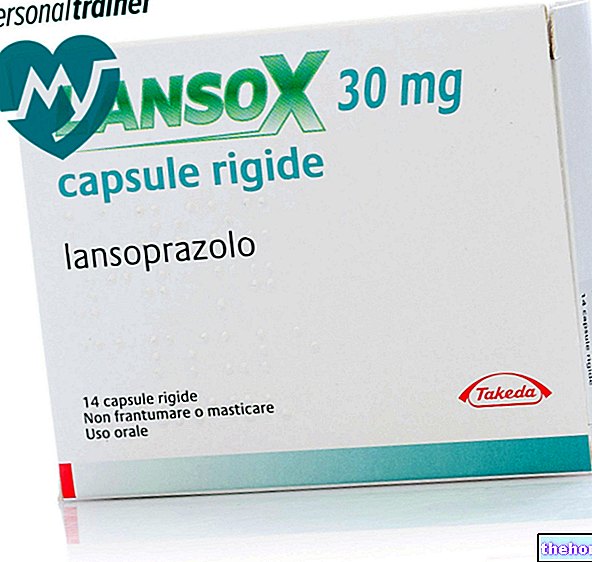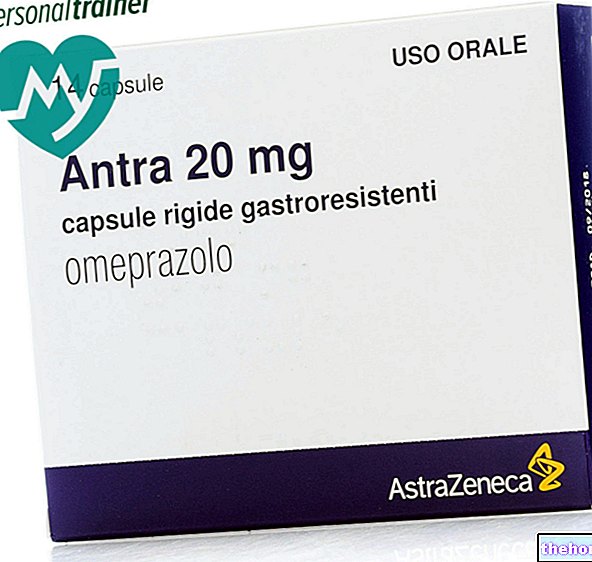Active ingredients: Carbomer 974P
SICCAFLUID 2.5 mg / g, eye gel
Siccafluid package inserts are available for packs:- SICCAFLUID 2.5 mg / g, eye gel
- SICCAFLUID 2.5 mg / g, eye gel in single-dose container
Indications Why is Siccafluid used? What is it for?
SICCAFLUID is a tear substitute and contains a lubricant called Carbomer 974P.
It is an eye gel used for the relief of dry eye symptoms (such as pain, burning, irritation or dryness) caused by eyes not producing enough tears.
Contraindications When Siccafluid should not be used
Do not use SICCAFLUID
If you are allergic (hypersensitive) to Carbomer or one of the other ingredients of SICCAFLUID, listed in Section 6, "What SICCAFLUID contains"
Precautions for use What you need to know before taking Siccafluid
Take special care with SICCAFLUID:
- if you wear soft contact lenses: you must remove them before using SICCAFLUID eye gel. After using SICCAFLUID, wait at least 30 minutes before putting the lenses back in. See also in section 2, "Important information about some of the ingredients of SICCAFLUID".
- If the condition worsens or has not improved after starting treatment with SICCAFLUID: Contact your doctor.
- DO NOT INJECT, DO NOT INGEST.
Children and adolescents up to 18 years:
The safety and efficacy of SICCAFLUID in children and adolescents at the recommended posology for adults have been established from clinical experience, but no data from clinical studies are available.
Interactions Which drugs or foods can modify the effect of Siccafluid
Tell your doctor or pharmacist if you are taking or have recently taken any other medicines, including medicines obtained without a prescription.
If you are taking any other medicine that must be used in the eye during treatment with SICCAFLUID: first apply the other ophthalmic medicine, wait for 15 minutes, then apply SICCAFLUID.
Warnings It is important to know that:
Pregnancy and breastfeeding
If you are pregnant or breastfeeding, ask your doctor for advice before starting to use SICCAFLUID. He will decide if he can use SICCAFLUID.
Driving and using machines
You may experience transient blurred vision after using SICCAFLUID. Wait until your vision returns to normal before driving or using machines.
Important information about some of the ingredients of SICCAFLUID
If you wear soft contact lenses you must remove them before using SICCAFLUID eye gel. After using SICCAFLUID, it is necessary to wait at least 30 minutes before putting the lenses back on.
This is important because one of the ingredients in SICCAFLUID, called benzalkonium chloride, can cause eye irritation and can change the color of soft contact lenses.
Dose, Method and Time of Administration How to use Siccafluid: Posology
If SICCAFLUID has been recommended for you, always use it exactly as your doctor has told you. If in doubt, you should consult your doctor or pharmacist.
The usual dose of SICCAFLUID is 1 drop in each eye requiring treatment, up to 4 times a day.
Children and adolescents up to 18 years:
The safety and efficacy of SICCAFLUID in children and adolescents at the recommended posology for adults have been established from clinical experience, but no data from clinical studies are available.
Instructions for Use
Do not use the bottle if the seal around the cap is broken before first opening. Wash your hands thoroughly before opening the bottle. Tilt your head back and look at the ceiling.
- Gently pull down the lower lid of the eye that needs treatment until a small "pocket" forms.
- Turn the bottle upside down. Squeeze it to release 1 drop in the "pocket".
- Let go of the lower eyelid and blink a couple of times.
- Repeat steps 1-3 for the other eye if it needs treatment.
To help prevent infection, do not let the bottle tip touch your eye, surrounding tissue, or anything else.
Close the bottle with the screw cap immediately after using it.
Keep the bottle upside down, this helps the formation of drops for the subsequent use of SICCAFLUID.
After opening, the bottle should not be used for more than 28 days; please also see Section 5 "How to store SICCAFLUID".
If you forget to use SICCAFLUID
If you have missed a dose of SICCAFLUID continue with the next dose as planned.
If you have any further questions on the use of this medicine, ask your doctor or pharmacist.
Overdose What to do if you have taken too much Siccafluid
The use of more drops than you should of SICCAFLUID does not cause any harm.
Side Effects What are the side effects of Siccafluid
Like all medicines, SICCAFLUID can cause side effects, although not everybody gets them.
Contact your doctor if:
- your condition worsens or has not improved after starting treatment with SICCAFLUID.
If you experience any of the following side effects immediately after using the eye gel, call your doctor if they cause you concern:
- short-term blurring of vision;
- mild short-lived stinging or burning sensation in the eyes.
The aforementioned side effects are known to occur, but the number of people in which they can occur can vary.
Reporting of side effects
If you get any side effects, talk to your doctor, pharmacist or nurse. This includes possible side effects not listed in this leaflet. You can also report side effects directly via the national reporting system at www. Agenziafarmaco.it/it/responsabili. By reporting side effects you can help provide more information on the safety of this medicine.
Expiry and Retention
Keep out of the reach and sight of children.
Do not use SICCAFLUID after the expiry date which is stated on the bottle label and carton after "EXP.". The expiry date refers to the last day of the month.
Do not store above 25 ° C.
Keep the bottle in the outer carton in order to protect it from light.
Store the bottle upside down as this helps drop formation for the next time you use SICCAFLUID.
The bottle must be thrown away 28 days after first opening, even if there are still a few drops left.
Medicines should not be disposed of via wastewater or household waste. Ask your pharmacist how to throw away medicines you no longer use. This will help protect the environment.
Other information
What SICCAFLUID contains
- The active ingredient is Carbomer 974P 2.5 mg / g.
- The other ingredients are benzalkonium chloride, sorbitol, lysine monohydrate, sodium acetate trihydrate, polyvinyl alcohol, water for injections.
Description of the appearance of SICCAFLUID and contents of the pack
SICCAFLUID is a slightly yellow opalescent gel contained in a plastic bottle with a screw cap.
Each bottle contains 10 g of eye gel.
Each carton contains 1 bottle.
Source Package Leaflet: AIFA (Italian Medicines Agency). Content published in January 2016. The information present may not be up-to-date.
To have access to the most up-to-date version, it is advisable to access the AIFA (Italian Medicines Agency) website. Disclaimer and useful information.
01.0 NAME OF THE MEDICINAL PRODUCT
SICCAFLUID 2,5 MG / G OPHTHALMIC GEL
02.0 QUALITATIVE AND QUANTITATIVE COMPOSITION
Carbomer 974P 2.5 mg / g
Excipient: benzalkonium chloride (0.06 mg / g).
For the full list of excipients see section 6.1
03.0 PHARMACEUTICAL FORM
Eye gel
Slightly straw yellow and opalescent
04.0 CLINICAL INFORMATION
04.1 Therapeutic indications
Symptomatic treatment of dry eye syndrome.
04.2 Posology and method of administration
Ophthalmic use
ADULTS (including the elderly)
Instill a drop of eye gel into the lower conjunctival sac, 1-4 times a day, depending on the degree of ocular disturbance.
CHILDREN:
no specific studies have been performed with SICCAFLUID 2.5 mg / g Ophthalmic Gel.
It is recommended not to use SICCAFLUID 2.5 mg / g Ophthalmic Gel in children until new data are available.
After instillation, the bottle must be stored in an upright position with the cap pointing downwards in order to facilitate the formation of drops for subsequent use.
Avoid touching the eye with the tip of the bottle. Close after use.
04.3 Contraindications
Hypersensitivity to one of the components of the product.
04.4 Special warnings and appropriate precautions for use
Benzalkonium chloride is commonly used in ophthalmic products as a preservative and cases of punctate keratopathy and / or ulcerative keratopathy have rarely been reported.
CONTACT LENSES
Benzalkonium chloride can be absorbed and discolored contact lenses, so patients should be advised to wait up to 30 minutes after instillation of SICCAFLUID 2.5 mg / g Ophthalmic Gel before wearing contact lenses.
If the symptom persists or worsens the patient should inform the doctor.
04.5 Interactions with other medicinal products and other forms of interaction
In case of concomitant treatment with another eye drop, wait 15 minutes between one instillation and the next.
SICCAFLUID 2.5 mg / g, Ophthalmic Gel should be the last drug to be instilled.
04.6 Pregnancy and breastfeeding
There is no experience regarding the safety of the use of SICCAFLUID 2.5 mg / g, Ophthalmic Gel during pregnancy and lactation. It should be prescribed with caution to pregnant and breastfeeding women.
04.7 Effects on ability to drive and use machines
Vision may be blurred for a few minutes after instillation.
In this case, the patient should be advised not to drive or operate hazardous machinery until normal vision is restored.
04.8 Undesirable effects
As with other eye drops, possibility of a slight and momentary itching or burning after instillation.
Transient blurred vision may occur following instillation before the gel is evenly distributed over the surface of the eye.
04.9 Overdose
Any overdose that may occur after ocular or oral administration is not of clinical relevance.
05.0 PHARMACOLOGICAL PROPERTIES
05.1 Pharmacodynamic properties
TEAR SUBSTITUTE
S: Sense organ (eye)
- Fluid ophthalmic gel based on hydrophilic high molecular weight polymer (carbomer 974P).
- Due to its physical properties, this gel forms a transparent, lubricating and humidifying film on the surface of the eye which temporarily compensates for the insufficiency of tears.
- Its pH and osmolarity are similar to those of the normal tear film.
- Its viscosity (700mPas) is higher than that of an artificial tear, which allows for a lower frequency of administration.
05.2 Pharmacokinetic properties
Due to the relatively large size of the carbomer molecule, penetration through the cornea is unlikely.
The residence time of the gel on the surface of the eye is approximately 30 minutes.
05.3 Preclinical safety data
Data obtained from subacute toxicity and local tolerability studies did not reveal any relevant effects.
06.0 PHARMACEUTICAL INFORMATION
06.1 Excipients
Benzalkonium chloride, sorbitol, lysine monohydrate, sodium acetate trihydrate, polyvinyl alcohol, water for injections.
06.2 Incompatibility
Not relevant.
06.3 Period of validity
Before first opening: 30 months.
After first opening: 4 weeks.
06.4 Special precautions for storage
Do not store above 25 ° C.
Keep the product inside the case in order to protect it from light.
06.5 Nature of the immediate packaging and contents of the package
10 g in 10 ml bottle (PE) with dropper (PE)
06.6 Instructions for use and handling
None.
07.0 MARKETING AUTHORIZATION HOLDER
THEA FARMA S.p.A.
Via Giotto, 36 - 20145 Milan
08.0 MARKETING AUTHORIZATION NUMBER
A.I.C. n ° 033816012 / M: 10 g in 10 mL bottle (PE) with dropper (PE)
09.0 DATE OF FIRST AUTHORIZATION OR RENEWAL OF THE AUTHORIZATION
29 May 1998 / April 2009
10.0 DATE OF REVISION OF THE TEXT
May 2012




























